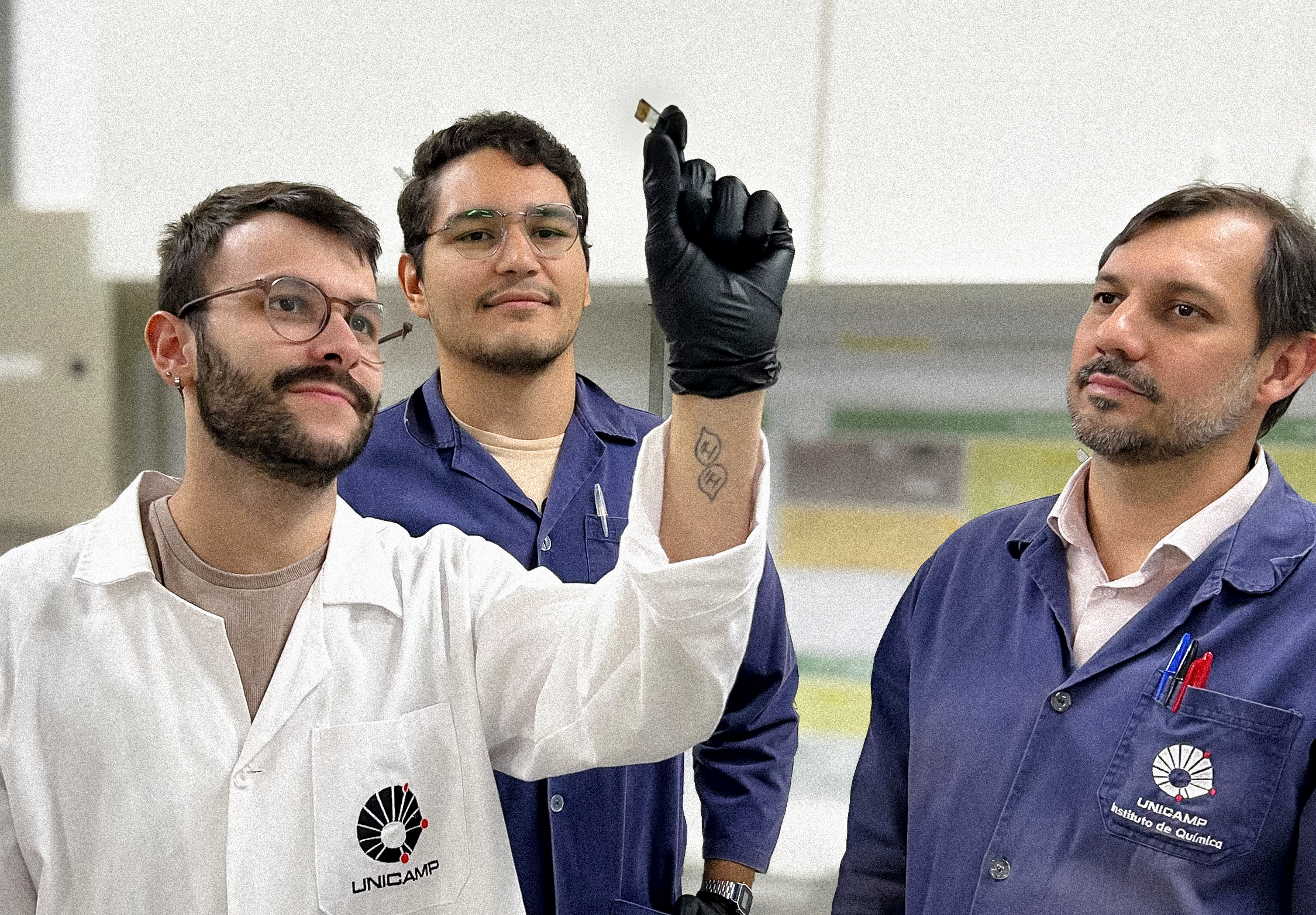Green hydrogen: method developed at CINE enhances low-cost catalysts

To split water molecules using energy from renewable sources is, to date, the best way to produce hydrogen with the lowest possible carbon emissions. In this process, two reactions occur simultaneously, generating, respectively, the evolution of oxygen and hydrogen.
For water splitting to be efficient, good catalysts are needed, especially for the oxygen evolution reaction, which is much slower. However, the cost of these materials currently represents 20 to 30% of the total cost of the hydrogen obtained at the end of the process. Therefore, the development of efficient and inexpensive catalysts is currently a major research challenge.
In a recently published CINE study, a group of researchers from Unicamp significantly increased the efficiency of low-cost catalysts using a simple approach: to introduce defects into the material.
The authors chose materials known as “Prussian blue analogs,” composed of metal atoms and chemical groups called cyanides. These catalysts are composed of elements that are abundant on the planet and relatively inexpensive, but their performance is limited by the low concentration of active sites.
Using an electrochemical method, in which electricity generates chemical reactions, researchers at Unicamp were able to remove cyanides from these materials, generating vacancies in their structure. “It may seem strange, but these ‘defects’ caused by vacancies can be a very good thing: the structure of the material changes slightly, creating more active spaces where important chemical reactions can occur more easily,” explains Professor Juliano A. Bonacin (Unicamp), a CINE researcher who led the research.
The activated materials were then used as catalysts in the oxygen evolution reaction. The experiments showed a significant improvement in their performance: the catalyst with 30% more defects generated 32% more oxygen than the original material. Furthermore, the catalyst vacancies were studied using techniques available at the Brazilian National Synchrotron Light Laboratory in order to clarify the mechanisms that led to these positive results.
According to Bonacin, the catalysts developed in this study represent a promising step toward large-scale low-carbon hydrogen production. However, tests outside the laboratory have not yet been conducted. “Although there is still a long way to go, the results we obtained indicate a concrete and viable advance toward cheaper and more sustainable industrial technologies,” adds the scientist.
The work was funded by FAPESP, Shell, Capes, and CNPq, in addition to strategic support from ANP.
Paper reference: Rafael L. Germscheidt, Ana B. S. de Araujo, João P. B. de Souza, Eduarda Q. Machado, Nycolas S. Galdino, Marco A. Z. Arruda, Tulio C. R. Rocha, Juliano A. Bonacin. Electrochemical generation of unconventional cyanide vacancies to boost the catalytic performance of Co-Prussian Blue on oxygen evolution reaction under mild conditions. Electrochimica Acta 529, 146327 (2025). https://doi.org/10.1016/j.electacta.2025.146327
CINE members who participated in the work: Rafael L. Germscheidt (currently a postdoctoral fellow and PhD student at the time of the research), Ana B. S. de Araujo (former member, pursuing a scientific initiation at the time of the research), João P. B. de Souza (currently a PhD student), Nycolas S. Galdino (currently a PhD student), and Juliano A. Bonacin (associate investigator).
Contact

Juliano Bonacin
UNICAMP

